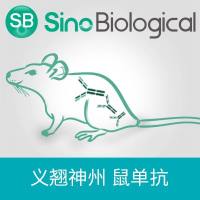Small-Molecule Affinity-Based Matrices for Rapid Protein Purification
互联网
互联网
相关产品推荐

JAM-A/Junctional Adhesion Molecule A 鼠单抗(Anti-Human)
¥900

Coronavirus Nucleocapsid重组蛋白|Recombinant SARS-CoV-2 Nucleocapsid-AVI&His recombinant Protein,Biotinylated
¥4520

SIRPA/SIRPA蛋白Recombinant Human Tyrosine-protein phosphatase non-receptor type substrate 1 (SIRPA)重组蛋白Brain Ig-like molecule with tyrosine-based activation motifs蛋白
¥1344

CCL1/CCL1蛋白/C-C motif chemokine 1(Small-inducible cytokine A1)(T lymphocyte-secreted protein I-309)蛋白/Recombinant Human C-C motif chemokine 1 (CCL1)重组蛋白
¥69

Rapid Chemi AP Substrate,蛋白组学级,阿拉丁
¥4248.90
相关问答
推荐阅读
A Method for Small Molecule Microarray-Based Screening for the Rapid Discovery of Affinity-Based Probes
Preparation of Photo-Cross-Linked Small Molecule Affinity Matrices for Affinity Selection of Protein Targets for Biologically Active Small Molecules
RaPID: An Aptamer-Based mRNA Affinity Purification Technique for the Identification of RNA and Protein Factors Present in Ribonucleoprotein Complexes

